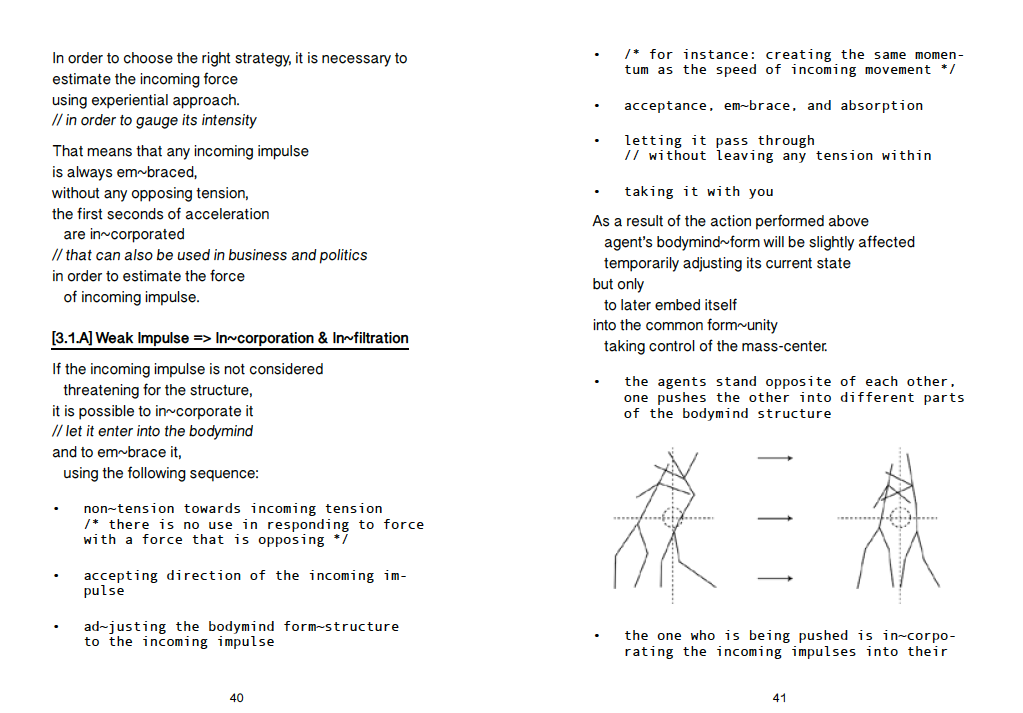CIRCADIAN PRESS / Narrative Structures Based on ∞OS Principles / Case Study
In this case study we will look into the concrete applications of ∞OS principles for creating engaging innovative narrative structures. We will use the example of two books: Way to Russia Travel Guide (published in 2014 by a popular online travel guide www.waytorussia.net) and Special Agent’s Manual (published in 2017 by Circadian). Both books were distributed and sold independently offline and online (including Amazon) and got 5-star reviews from its customers.
Objectives
Both of the books had similar objectives:
- Provide a reading experience that is more suitable for the fragmented attention-span pattern typical for the internet age
- Engage the reader to have as diverse experience as possible when reading the book
- Allow the reader to have a coherent experience of content even if they read only a few fragments from the book (non-linear reading experience)
- Make the reading experience playful and fun
Way to Russia Guidance is a travel guide to Russia and Russian culture, proposing a different way to engage to the country’s landscape and people. It has a practical hands-on guide to getting a visa or Trans-Siberian train tickets, while at the same time offering a very unusual account of the most interesting stuff that came out from Russia during the last 100 years (some of them are not that well known). The book also has travel guides to many Russian cities and Trans-Siberian railway.
Special Agent’s Manual is a different kind of book. It’s a proposal of a new kind of ethics, which is based on two very simple ideas: everybody is different (and, therefore, special in their own way), and everyone has a capacity to act (the origin of the word “agent” is from the Latin “agere” – to do). What are the implications of this approach and how people can be special in a way that connect them to other people rather than separating them from each other? What are the concrete practices that one can engage into on the level of intersubjective relations and how one can play with all the other connotations of “special agency” that exist out there and even instrumentalize them for one’s own purposes.
∞OS Procedures Employed
The following ∞OS procedures were employed for reaching the objectives above.
Oscillatory Engagement Procedure
The core of this ∞OS approach is to create a series of impulses, which would engage the other side into continuous interaction. This is done through a combination of Inflitration Procedure, Control Takeover Procedure and Assimilation Procedure. First, an impulse (provocation) is delivered into the system to slightly bring it out of balance. Subsequently the system engages into an interactive process, either delivering an impulse back (which is assimilated or redirected using control takeover procedure) or creating more tension in order to provoke the system to increase its effort to then use the excess energy produced to bring that system to a new state.
This approach is used in a very concrete way in making these two books. One of the outcomes is to make the process of reading engaging for the audience that is used to browsing websites and constantly shift attention. Therefore, a certain “provocation” is needed at first to catch the interest.
In case of Way to Russia Guide Book this is achieved using an unusual format for a travel guide book (making look like a website more than a book):

This non-linear structure of the book makes it more engaging and it also allows the reader to browse it in a way that’s more like browsing internet – following associative threads rather than reading it page by page.
In case of the Special Agent’s Manual the intention is to communicate a certain ethics and in order to make it more engaging and interesting for the readers the format of a technical manual is proposed from the outset:
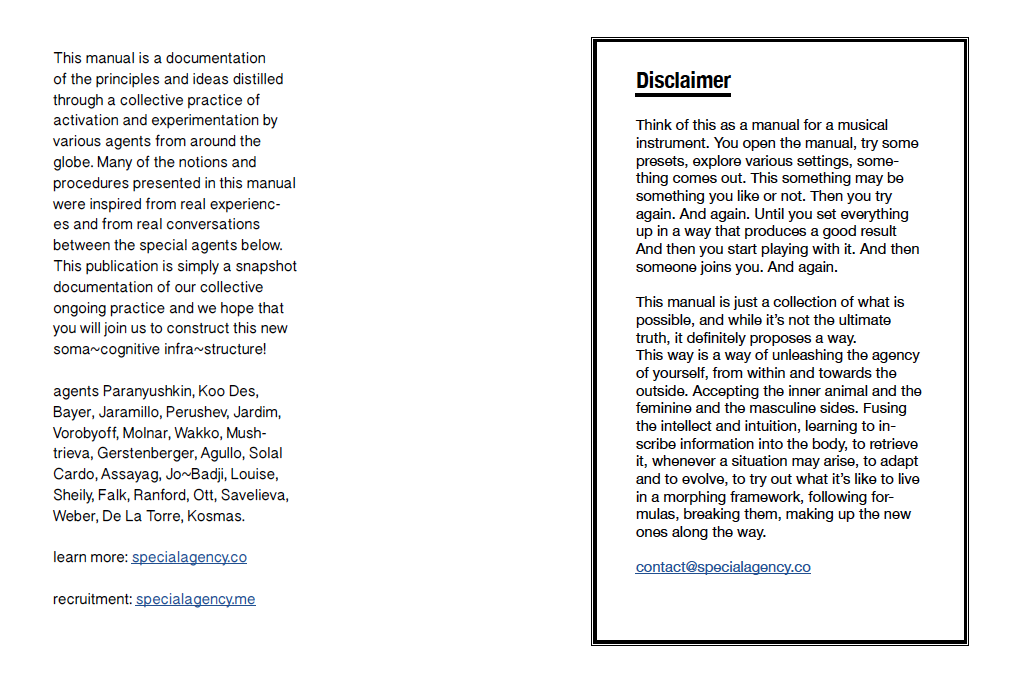
Other strategies are used throughout the book to maintain attention and to increase retention. For example, a part of the book that is quite technical (on changing patterns) is followed by a part, which is more abstract and that – in fact – invites the reader to change their patterns of reading the materials and to “rest”:
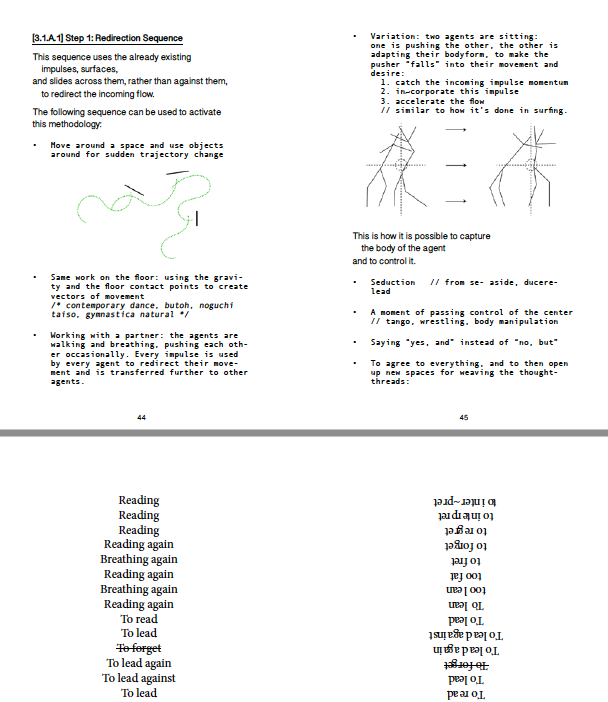
Redirection Procedure
Redirection procedure is based on using the already existing impulse (pacing the already existing flow) and redirecting it to a slightly different direction, which is still along the way.
For example, in case of Way to Russia Travel Guide Book the intention was to communicate interesting and engaging content about Russia that talks about the country in a way that is different to mainstream media and that breaks the stereotypes – or, at least, slightly twists them. Making an “alternative” guide to Russia would not work with this objective because it would only reach people who are already interested in a different point of view. Therefore, the decision was made to present the book as the mainstream guide to Russia using the already existing platform www.waytorussia.net (visited by 1.5 Mln people every year), offering the kind of content that can help any traveler to Russia who’s seeking for practical advice (visa, trains). While – at the same time – giving a different point of view on the Russian culture and offering information about off-the-beaten-track locations. For example:
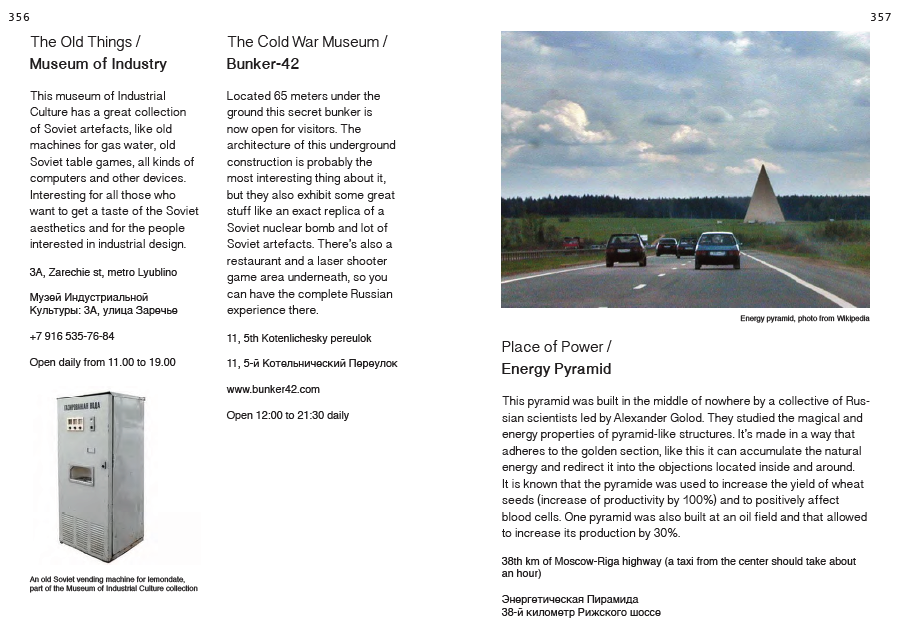
Neutralization Procedure
This procedure is employed in ∞OS in order to neutralize the influence of the already existing preconceptions, ideas, and expectations on the ongoing process. It helps produce a more adaptable state, open to external influence, while resilient at the same time.
In the context of making a book this was realized using the format of disclaimers and manuals that were included on the very first pages of both books to explain the different approach to reading that both books proposed, for example:
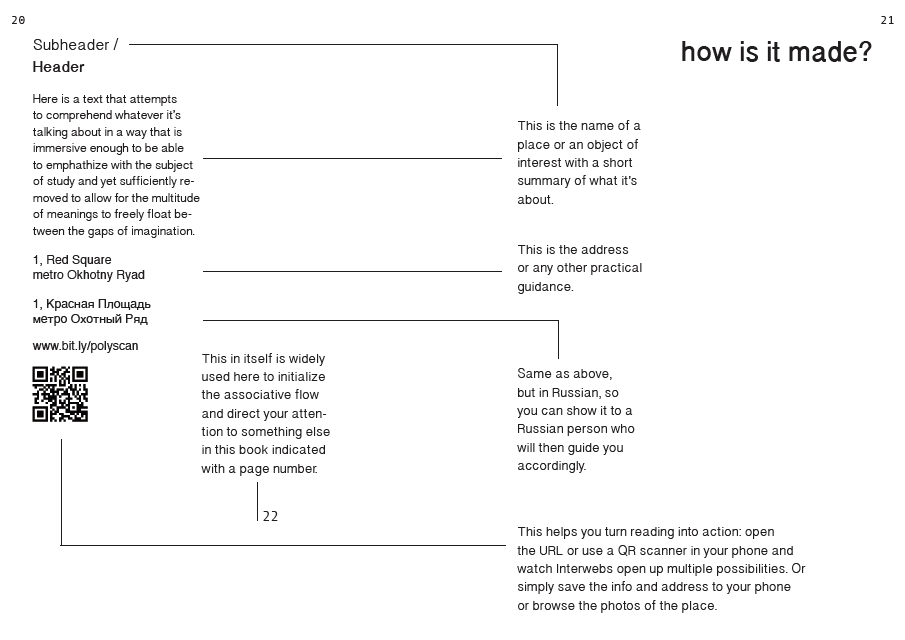
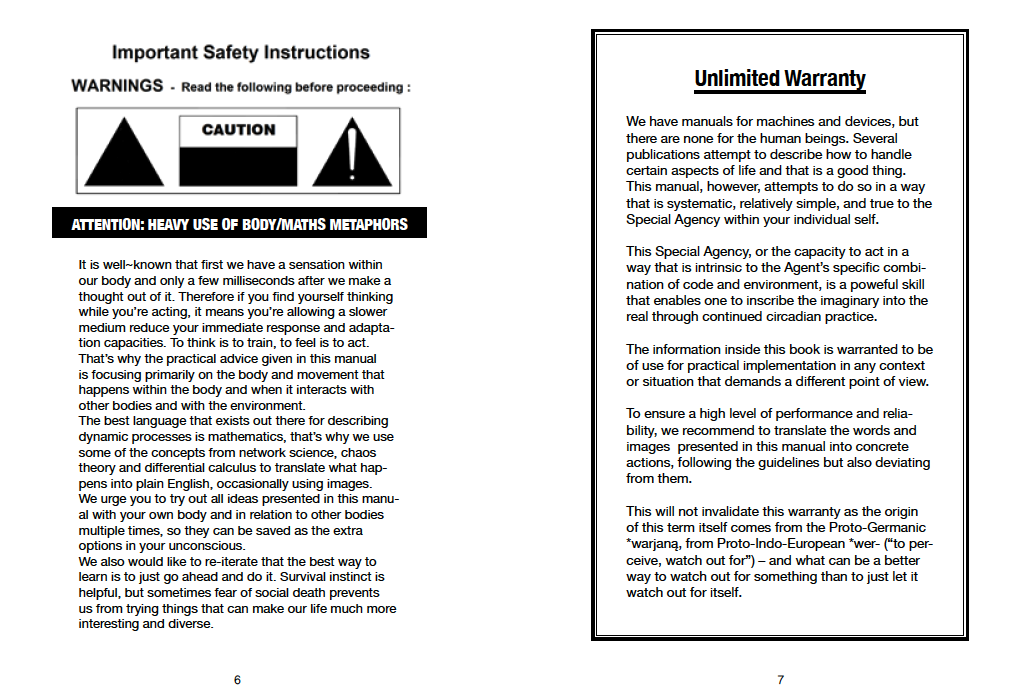
This approach makes it clear from the beginning that while both books are still books, they are not to be read in the way that we’re used to… Instead, the reader is invited to forget the way they normally approach published materials and to perceive them from a different point of view. In case of Way to Russia Guidance the proposed way is related more to the way we browse through internet (following links and associative narrative threads). In case of the Special Agent’s Manual the reader is invited to read it as a technical manual and a hands-on guide.
Intra-Activation Procedure
Another ∞OS procedure which both books employ is based on understanding the book as an object that starts to exist only when it is activated by the reader. The Intra-Activation procedure proposes to think of any interaction not as a process between two concrete entities, but, rather, as a temporary creation of a common living being, the actual intra~action, which emerges for the duration of coming in contact with one another. Both books achieve that through offering concrete sets of actions that the reader (the user) has to perform in order to activate the narrative.
For instance, in case of Way to Russia Guide the readers learn about Kalashnikov gun and then is proposed a place in Moscow where they can experience it:
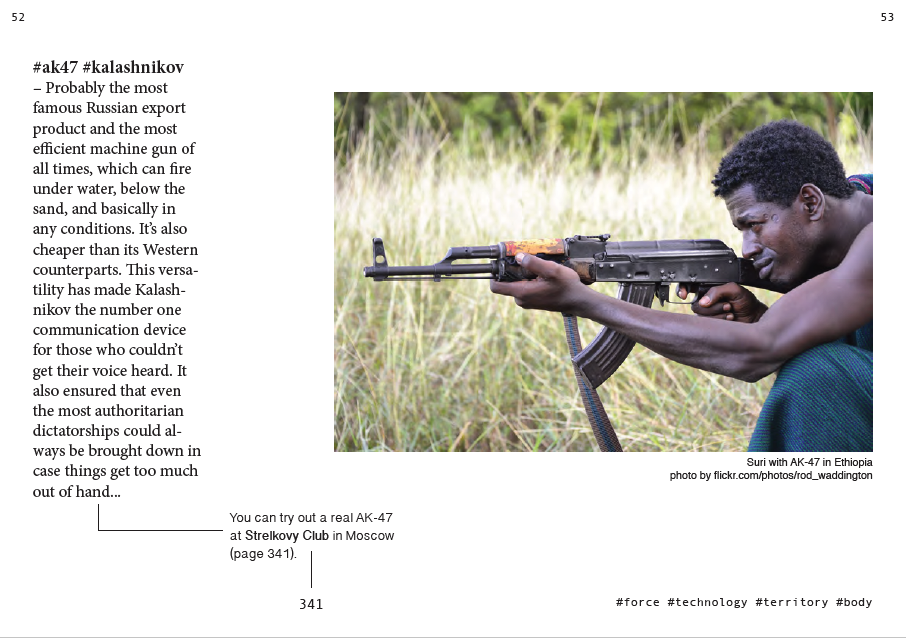
In Special Agent’s Manual the readers can learn about the infiltration procedure (how to enter into a system – both in the physical and social realms) and then try it in a very concrete way through a physical exercise with another person:
